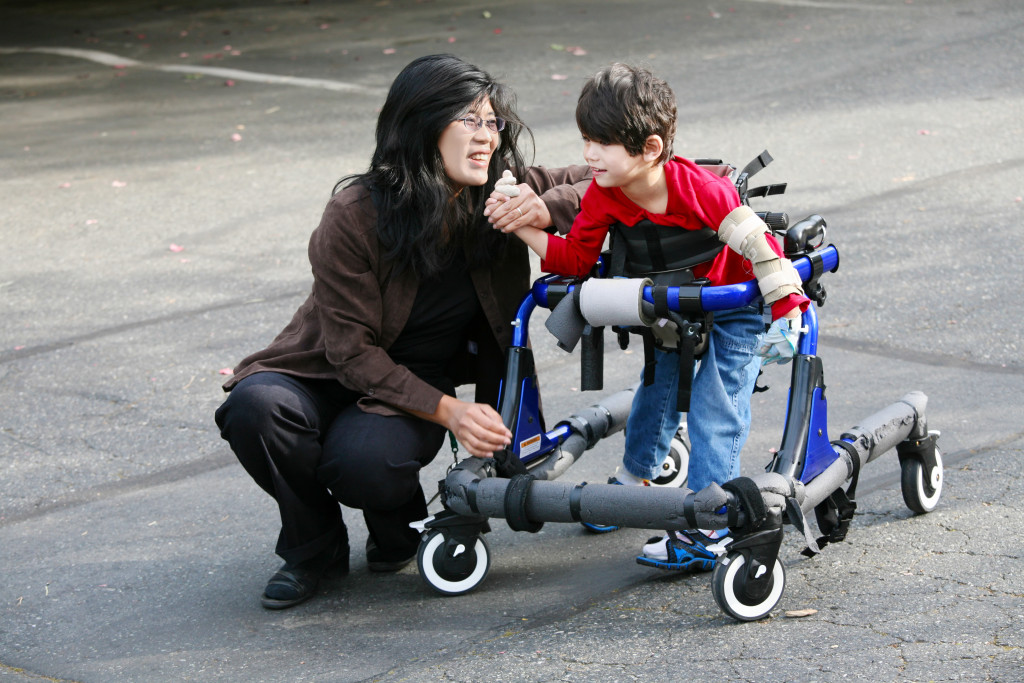Cerebral palsy is a condition that affects a child’s ability to move and maintain balance and posture. It is caused by damage to the brain that occurs before, during, or after birth. Cerebral palsy can range from mild to severe, and it can affect different parts of the body to varying degrees. There is no cure for cerebral palsy, but many treatments can help a child live a full and happy life.
As a parent, it is essential to understand all you can about your child’s condition. This will help you provide the best possible care for your child and will also help you advocate for your child’s needs. Here are some things you should know about caring for a child with cerebral palsy.
Treating Cerebral Palsy
There is no one-size-fits-all approach to treating cerebral palsy. Your child’s individual needs will determine the best course of treatment. Some common treatments include:
- Physical therapy: Physical therapy can help improve muscle strength, motor skills, and flexibility. It can also help reduce pain. Your child’s physical therapist will design an individualized treatment plan based on your child’s specific goals.
- Occupational therapy: Occupational therapy focuses on helping your child develop the skills necessary for daily living, such as eating, dressing, and bathing. Occupational therapists also teach parents how to make their homes more accessible for their children.
- Speech therapy: Speech therapy can help children with cerebral palsy with difficulty speaking clearly. Speech therapists can also help with feeding issues and swallowing problems.
- Medications: Many different types of medicines can be used to treat the symptoms of cerebral palsy. These include drugs that relax muscles, reduce pain, control seizures, and prevent contractures.
- Surgery: In some cases, surgery may be recommended to treat specific symptoms of cerebral palsy. For example, tendon release surgery may be recommended to improve muscle flexibility. Surgery is usually only considered when other treatments have failed to provide relief.
Caring for Your Child at Home
In addition to receiving formal treatment from professionals, there are many things you can do at home to care for your child with cerebral palsy. Here are some tips:
Educate yourself
The first thing you should do is educate yourself about your child’s condition. This will help you understand what to expect and how to best care for your child. If possible, get a new online care certificate to ensure you are up-to-date on the latest information. This will also help you feel more confident when talking to your child’s doctors and therapists. The more you know, the better you will be able to advocate for your child’s needs.
Create a safe environment
Make sure your home is safe for your child by removing any hazards that could cause falls or other injuries. Babies and young children should never be left unattended on high surfaces like beds or sofas. Keep small objects out of reach, so your child does not accidentally choke on them. Consider baby-proofing electrical outlets and cabinets containing cleaning supplies or other potentially dangerous items. Install grab bars in the bathroom and place nonslip mats in the tub or shower. If your home has stairs, install gates at the top and bottom.
Encourage movement

Children with cerebral palsy need to stay active. Exercise helps improve muscle strength, coordination, and flexibility. It also helps reduce pain. There are many ways to encourage movement, even if your child is confined to a wheelchair. Play catch, go for walks, dance around the living room — get creative! Make sure you consult your child’s doctor before starting any new exercise program.
Communicate effectively
Children with cerebral palsy may have difficulty communicating. This can be frustrating for both the child and the parent. It’s essential to find ways to communicate effectively with your child. Try using picture cards or sign language if verbal communication is difficult. If your child is nonverbal, many emerging technologies can assist with communication, such as eye-tracking devices that allow children to type out words or phrases.
Adapting to Your Child’s Changing Needs
As your child grows, their needs will change. It’s essential to be prepared for these changes and to adapt your caretaking accordingly. For instance, as your child ages, they may want more independence. They may also experience new symptoms, such as fatigue or pain. Be sure to talk to your child’s doctor about any changes you notice.
Final thoughts
Parenting a child with cerebral palsy comes with unique challenges, but it is also immensely rewarding. By educating yourself about your child’s condition and actively working to create a safe and stimulating home environment, you can make a real difference in your child’s life. With love, patience, and perseverance, you will help your child reach his or her full potential.

